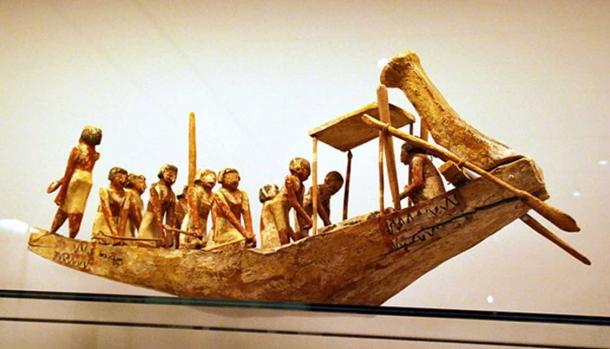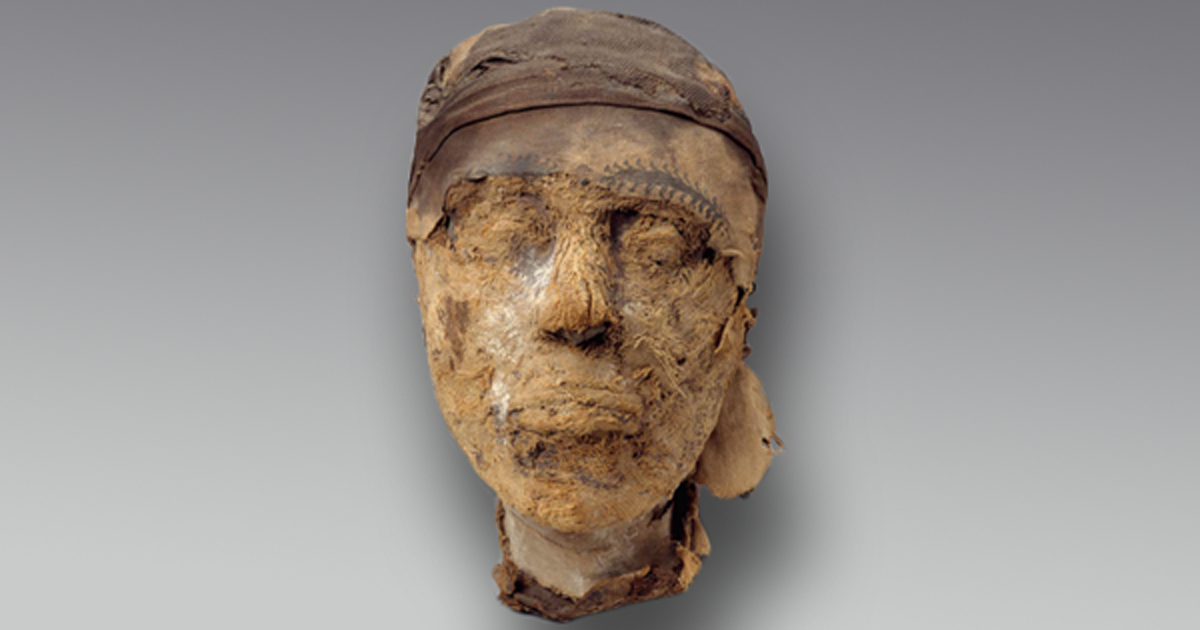FBI Crime Team Solves Mystery of 4,000-Year-Old Decapitated Mummy
Just over a century ago, an American archaeologist found a hidden tomb buried 30 feet beneath boulders in an ancient Egyptian necropolis. He was met with one of the finest painted coffins ever found in Egypt, and a decapitated mummified head that had been placed on top of it. So, who did the head belong to? Researchers turned to the FBI crime investigation unit to help crack the case.
The Emergence of a Mystery
The tomb, designated Tomb 10A, was discovered by the American Egyptologist George Andrew Reisner, leader of the Harvard University / Boston Museum of Fine Arts expedition, in 1915 in the Deir el-Bersha necropolis near the Nile valley town of Minya, 225 km south of Cairo.
The burial chamber had been raided of its gold and jewelry in ancient times, but left behind were several finely painted cedar wooden coffins, a canopic chest, canopic jars, model boats, and more than 100 wooden models of boats and men and women in daily life activities, the most famous of which is known as the ‘Bersha procession’. It is composed of a priest leading three offering girls and is ranked among the finest wooden models found in Egypt. Also left behind was a headless, limbless mummified torso, which had been tossed in a corner, and the decapitated mummy head. Why was the body left in this way, and who did the head belong to? It was a 4,000-year-old mystery that Egyptologists were determined to solve.

The Bersha Procession, found in Tomb 10A. Credit: Museum of Fine Arts, Boston

Model boat found in Tomb 10A (CC by SA 3.0)
The Bersha Coffin
One of the coffins found within the tomb, now known as the Bersha coffin, is the finest Middle Kingdom coffin found to date, and is considered a masterpiece of panel painting. The Museum of Fine Arts states that the paintings on the interior of the coffin are “exquisitely detailed in thick, vividly colored paint. The artist’s painstaking brush strokes and eloquent use of shading produced a level of realism rarely surpassed in Egyptian art.”
“The focal point is an intricately decorated false door through which the ka could pass between the afterlife and the world of the living,” the Museum adds. “In neat columns of tiny, cursive hieroglyphs are the Coffin Texts, a collection of funerary rituals and spells intended to protect and guide the dead on their way to the afterlife. These texts continue around the coffin’s interior.”

Front side panel of outer Bersha coffin, 2010–1961 BC. Credit: Museum of Fine Arts, Boston
Who Did the Tomb Belong to?
Inscriptions on the coffins revealed that the tomb belonged to Djehutynakht, an ancient Egyptian "Great Overlord of the Hare nome" (the 15th nome of Upper Egypt) during the very end of the 11th Dynasty or the early 12th Dynasty (21st-20th century BC), and originally buried in the tomb were Djehutynakht and his wife, who was also named Djehutynakht.

A wooden model of Djehutynakht found in Tomb 10A (CC by SA 3.0)
Mystery of the Severed Head
Live Science reports that scientists have debated for over a century whether the mummified remains belonged to Djehutynakht himself or to his wife.
“Deepening the mystery, the head had been altered during the mummification process, with several bones removed from the jaw and cheek in an effort to enable the deceased to eat and drink in the afterlife,” reports Live Science.
Boston Museum staff were determined to find out whether it was the head of Mr. or Mrs. Djehutynakht that they had on display.

The decapitated, mummified head found in Tomb 10A (CC by SA 3.0)
FBI Steps in To Solve the Mystery
The New York Times reports that the museum turned to the FBI forensic unit to help them solve the mystery. The goal of their investigation was to extract genetic material from the 4,000-year-old mummy, efforts of which had previously failed due to difficulties extracting DNA after centuries in a hot, DNA-degrading environment.
In 2009, scientists had drilled into the core of a molar tooth and extracted 105mg of tooth dust. However, for years, scientists tried fruitlessly to extract DNA from the tooth dust. Enter the FBI. Dr. Odile Loreille, a forensic scientist at the FBI who had previously succeeded in extracting genetic material from a 130,000-year-old cave bear, dissolved the tooth dust in a liquid mixture that was designed to amplify existing DNA. And, success.
“I honestly didn’t expect it to work because at the time there was this belief that it was not possible to get DNA from ancient Egyptian remains,” Dr Loreille told the New York Times. “But in the journal Genes in March, Dr. Loreille and her colleagues reported that they had retrieved ancient DNA from the head.”
The DNA was damaged, demonstrating that it came from the ancient mummy and not modern contamination.
Mystery Solved
After plugging her data into computer software that analyzed the ratio of chromosomes in the sample, the results revealed that the DNA came from a biological male. The head belonged to Governor Djehutynakht and not his wife.
Not only did the FBI solve a 4,000-year-old mystery, they also helped establish that DNA could be extracted from ancient mummies, laying the groundwork for many further investigations to come.
Top image: The mummified head of Djehutynakht. Credit: Museum of Fine Arts, Boston.
















